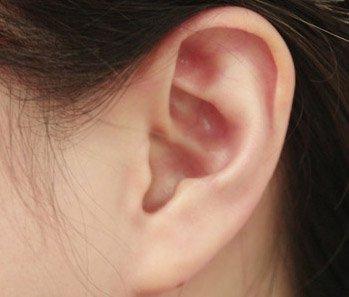Do you want to move your ears? Studies find that the muscles in the jaw, face, scalp and neck are what could help move your ears. Swallowing and chewing can also get your ears to move slightly. What is the function of muscles that move ears?

Muscles That Move Ears and Their Functions
1. Auricle Muscles
The posterior, superior, and anterior auricle muscles can help to move the ears. The small muscle found in front of the ear is called the anterior auricle. Just above the ear is the slightly larger superior auricle. The very small muscle just behind the ear is the posterior auricle. The muscles are also connected to bones and tendons in the skull as well as the skin that is around the ear. Some people can focus on these muscles, moving them and giving the appearance of ear moving.
2. Temporalis
Extending from the temple, and going up and over the ear, the temporalis muscle is circular-shaped. Midway between the back of the head and the temple, you will find this muscle. It is connected to the skull, above, in front and behind the ears and jaw muscles. The temporalis moves when chewing, which slightly changes the position of ears.
3. Platysma
Wonder the function of muscles that move ears? Let's look at platysma. It is a large muscle; it connects the jaw and lower chin, and extends along the front of the throat. When swallowing, this muscle moves, shifting the ears’ position.
How to Move Ears
Your ears may move when you chew or swallow, but some people can move theirs intentionally. Ear wiggling in people is a vestigial feature, meaning it served a purpose to our ancestors but has become functionless. There aren’t scientific studies on how many people can wiggle their ears but anecdotal evidence suggests the population is between 10-20 percent.
There are reports that suggest wiggling ears is something that can be taught. People who have good control of their facial muscles are more likely to be able to do it. If you can’t, don’t worry as it isn’t a skill that is highly sought after.
Step 1: Locate the Muscles
The function of muscles that move ears will come into play when you know where they are. The muscle locations have been explained. Or you can identify the muscles by smiling while touching your ears. There are two muscles: one is right in front where your ear lobe starts to curve and the other is located at the central region behind your ear. These are the muscles to focus on.
Step 2: Focus
The next time you raise your eyebrows or smile, focus on the muscles. This is an unnoticed movement for the most part. But when you put your attention here, you will notice the muscles tighten and relax. Focus your attention here and try to move these muscles purposefully.
Step 3: Try
Now that you have located them, it’s time to move these muscles while you concentrate on them. At first, along with these muscles, you may also move your eyebrows and scalp as well as the muscles surrounding your lips. It’s best to do this in front of a mirror and focus on moving your ears. During this step, you will figure out which muscles are doing what.
Step 4: Move the Ears Exclusively
Once you are able to move the muscles when you want to, even if other muscles are moving, you are on track. Next is to isolate the muscles and not move the others. Practice moving your ears without smiling or moving your eyebrows. This can help make the function of muscles that move ears into full play. It will be distracting if every time you wiggle your ears, you must grin or look surprised.
Step 5: Practice Your Skill
Now it’s time to practice your skill. Once you have it truly mastered, you can move your ears without others noticing what muscles you are using. With enough practice, you may even wiggle each ear separately.
This video will give you a visual idea on what muscles and techniques to use to wiggle your ears.
